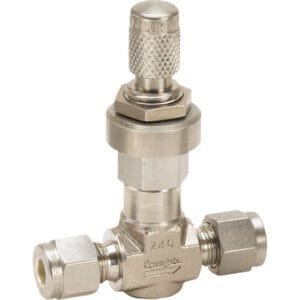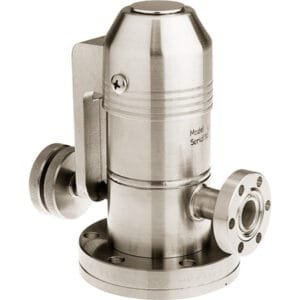Vented Stainless Steel Bolts (SI) from TFM: Precision Fastening with Built-In Pressure Relief
When performance and reliability are paramount in vacuum, scientific, or industrial systems, Vented Stainless Steel Bolts (SI) from TFM provide the ideal fastening solution. These specialty bolts are engineered to offer both robust mechanical strength and built-in venting, making them a must-have in environments where pressure equalization is critical to component safety and system performance.
What Are Vented Stainless Steel Bolts (SI)?
Vented bolts are uniquely designed fasteners that feature a precision-machined hollow core or longitudinal venting channel. This design allows trapped gases or air to escape during installation or system operation. Made from high-grade stainless steel, these SI-standard vented bolts combine mechanical durability with resistance to corrosion, making them suitable for use in ultra-high vacuum (UHV), cleanroom, or pressure-sensitive applications.
Key Features of TFM’s Vented Stainless Steel Bolts (SI)
Internal Vent Passage: Designed to vent trapped gas or pressure in vacuum assemblies, minimizing the risk of virtual leaks and contamination.
Stainless Steel Construction: Built from premium-grade stainless steel to resist oxidation, chemical corrosion, and mechanical wear.
SI Thread Standard: Compatible with metric components and systems built around System International (SI) standards.
Precision Machining: Manufactured with tight tolerances to ensure a secure, vibration-resistant fastening while preserving venting effectiveness.
Cleanroom Ready: Ideal for clean applications, such as semiconductor fabrication or scientific instrumentation, where pressure equilibrium and cleanliness are crucial.
Applications of Vented Stainless Steel Bolts (SI)
TFM’s vented stainless steel bolts are designed for specialized use across a variety of advanced fields. Key application areas include:
Vacuum Chambers & UHV Systems: Essential for minimizing outgassing and virtual leaks, supporting stable vacuum environments.
Semiconductor Equipment: Used in precision assemblies where pressure differentials and particle generation must be strictly controlled.
Aerospace & Defense: Ideal for systems exposed to rapid altitude or pressure changes, requiring pressure-equalized fasteners.
Cryogenic & High-Temperature Systems: Maintain secure fastening while withstanding temperature extremes and pressure variations.
Research Laboratories: Found in scientific apparatus where system integrity and contamination control are non-negotiable.
Why Choose TFM’s Vented Bolts?
TFM is a trusted source of advanced materials and fasteners tailored to meet the stringent requirements of high-tech industries. When you select Vented Stainless Steel Bolts (SI) from TFM, you gain the benefit of:
Uncompromising Quality: Our bolts are machined from high-purity stainless steel and inspected for dimensional accuracy and venting functionality.
Industry Expertise: We understand the technical demands of vacuum systems, cleanrooms, and precision mechanical assemblies.
Broad Compatibility: Offered in various SI metric sizes for seamless integration into global systems.
Fast Delivery & Support: With quick shipping and responsive technical assistance, we help keep your projects on schedule and within spec.
Dimensional Drawings
For detailed specifications, please refer to the dimensional drawings provided below. These drawings illustrate the precise measurements and design features of our vented hex head bolts to ensure compatibility with your applications.





Reviews
There are no reviews yet.